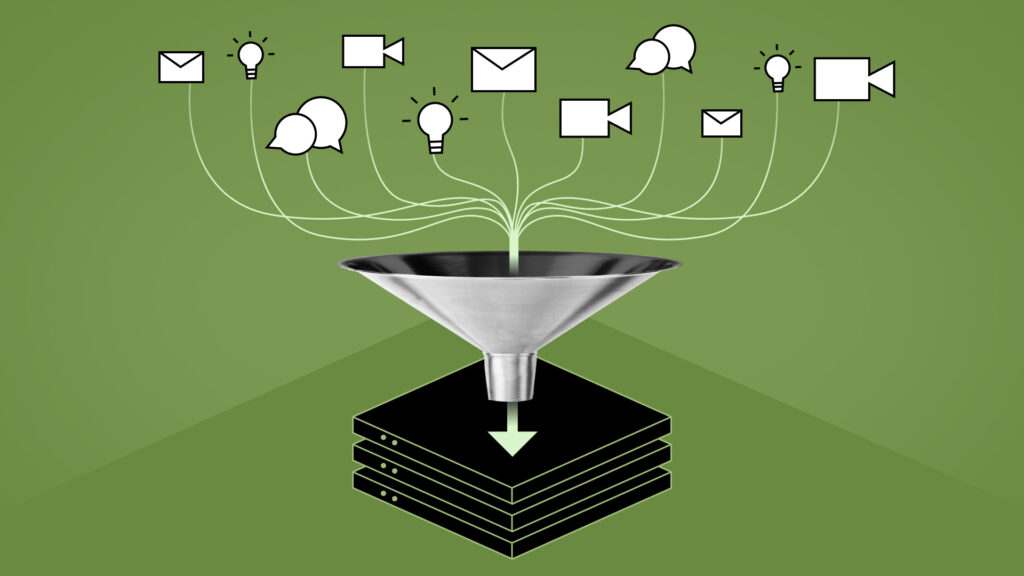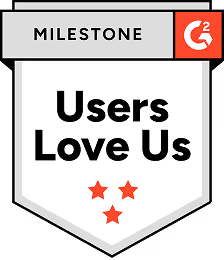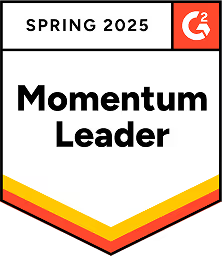How to use generative AI for personalized content creation

TL;DR
In today's hyper-connected digital landscape, the concept of "one-size-fits-all" content has become as outdated as dial-up internet. Your audiences expect content that feels tailor-made for their unique needs and goals. But here's the rub: it's incredibly time-consuming for businesses to create this kind of content (and at scale).
That's where generative AI (genAI) comes in.
Key takeaways from the article:
- GenAI's versatility: GenAI can generate everything from persona-specific blog posts to dynamically personalized landing pages, and even create custom images or audio clips that resonate with each segment of your audience.
- Data-driven empathy: GenAI can analyze a wealth of user data to help you craft content that doesn't just address pain points, but also aligns with your audience's values and emotional drivers.
- Human-AI collaboration: In our rush to embrace new tech, we sometimes forget that tools are meant to enhance human capabilities, not replace them. Infusing AI-generated content with your (human) team's industry expertise and personal anecdotes preserves the authenticity that your audience values.
- Ethical considerations: As you harness this technology, stay informed about evolving legal and ethical issues like copyright and bias. This will help you ensure that your content isn't just personalized and effective, but also ethically grounded.
- 12-step strategic framework: We'll provide you with a 12-step process for using genAI to create personalized content that helps ensure it's intentional, effective, and aligns with your audience's needs.
In today's digital landscape, personalized content has become the holy grail for businesses that are looking to build long-lasting trust with their target audiences. Gone are the days when a one-size-fits-all approach was enough. Now, consumers expect to get content that feels tailor-made to address their unique set of preferences, pain points, and goals.
The only problem is that personalized content can take a significant amount of time, effort, and resources to create. These are luxuries that most go-to-market (GTM) teams just don’t have these days. But if personalized content is the thing that could help move the needle for your business, how can teams find the time and resources to devote to content creation while also making time for the rest of their day-to-day tasks?
Enter generative artificial intelligence (genAI) – a game-changing technology that promises to revolutionize the way we create and deliver personalized content at scale.
Quick refresher: What is generative AI?
Before we go on, it's essential to first understand the underlying premise of genAI.
Unlike traditional AI models that operate on pre-existing data, genAI models are trained to generate entirely new content like text, audio, images, or graphics; they do this by using techniques like machine learning and neural networks to learn patterns and relationships from massive datasets. This capability empowers businesses to craft highly contextual and relevant content that captivates audiences and drives engagement.
While we'll dive deeper into the technicalities later, the key takeaway is that genAI can be an invaluable asset for any business that wants to create more relevant, engaging content at scale.
How can generative AI be used for content creation?
GenAI has numerous applications in the realm of content creation; we'll explore some of the most promising ones here.
- Copywriting & content generation: One of the most obvious use cases for genAI is automated content generation. AI models like GPT-4o can be trained on vast amounts of text data and then used to generate everything from blog posts and website copy to email sequences and social media captions. While the output may require some human editing and polishing, it can significantly reduce the time and effort required to produce high-quality content.
- Personalization & dynamic content: You can also use genAI to craft highly personalized content experiences for your audience. Specifically, AI models can analyze data about a user's interests, preferences, and past interactions, and then generate content that’s tailored to their specific needs. This could include personalized product recommendations, dynamic website content that adapts based on the user's location or behavior, or even customized marketing messages.
- Content ideation & enhancement: Beyond pure content generation, genAI can also be leveraged for ideation and content enhancement. AI models can analyze existing content and data to suggest new topics, angles, or creative directions to explore. They can also be used to expand upon or elaborate on existing pieces of content, adding depth and nuance.
- Multimodal content creation: GenAI isn't limited to just text generation. Models like DALL-E and Stable Diffusion can generate highly realistic images and artwork based on textual prompts, opening up new possibilities for visual content creation. Other models can generate audio, music, or even video content, enabling a truly multimodal content creation experience.
{{cta-1}}
How can generative AI make content personalization easier?
Personalization has long been a goal for content creators, but it’s traditionally been a time-consuming and resource-intensive endeavor. GenAI offers a more scalable and efficient solution by automating many aspects of the personalization process.
For starters, genAI models can analyze users’ data – including their browsing history, buying behaviors, demographic information, and more – to build detailed user profiles and audience segments. This data can then be used to generate content that addresses the specific interests and preferences of each user or audience segment.
Here are some real-world examples to give you some context:
- An e-commerce brand could use genAI to create personalized product recommendations, dynamic landing pages, and even customized email campaigns based on a shopper's browsing and purchase history.
- A news publisher could use AI to generate article summaries or content recommendations based on a reader's interests and reading habits.
Beyond just content generation, genAI can also be used to personalize the delivery and presentation of content. AI models can optimize the timing, format, and distribution channels for content based on individual user preferences and behaviors, ensuring that the right content reaches the right audience at the right time.
How to use generative AI for content personalization: A 12-step framework
Creating personalized content with generative AI isn't just about having access to the right tools; it's about using those tools strategically to craft messages that truly resonate with your audience.
Here's a step-by-step guide to help you leverage genAI for effective content personalization:
Step #1: Define your audience personas (if you haven’t done so already).
Before you even think about prompts or AI platforms, you need to know who you're talking to. Build detailed audience personas that go beyond basic demographics. Ask yourself questions like:
- What are their job roles?
- What industries do they work in?
- What are their day-to-day pain points?
- What are their aspirations and goals?
- What factors do they take into account when making business decisions?
You can use information-gathering tools like surveys, interviews, and data to build these profiles. The richer your understanding, the more personalized your content can be.
Already have these locked down? Fantastic! You can skip to the next step.
Step #2: Map the customer journey.
A great content strategy should involve creating different pieces of content that serve different stages of the customer's buying journey. Is the topic you’re hoping to cover appropriate for someone who’s just becoming aware of a problem? Or, is it more relevant for someone who knows they have a problem and are ready to find solutions?
Create a journey map that outlines what information they need at each stage—awareness, consideration, decision, retention. This map will guide you in tailoring content that meets their evolving needs, making each interaction feel timely and relevant.
Step #3: Analyze content performance data.
Your existing content holds valuable clues about what resonates with your audience. Use analytics tools to see which blog posts, emails, or social media updates have the highest engagement rates. Look for patterns: Do they prefer how-to guides over thought leadership pieces? Do they engage more with data-driven content? This data will help you understand their content preferences, allowing you to personalize not just the message, but the format as well.
Step #4: Choose the AI platform you’ll use for content generation.
Once you’ve identified the specific audience you want to speak to, the topic you’ll talk about, and the format of the content you want to create, it’s time to choose your AI platform. There are various models and platforms available, each with their own strengths and specialties. Some popular options include GPT-3.5 for text generation, DALL-E for image generation, and platforms like Anthropic's Claude 3I or OpenAI's GPT-4o for more advanced, multi-modal content creation.
Step #5: Integrate the AI platform into your content operations processes.
Once you’ve selected the AI platform you want to use for content generation, you'll need to integrate it into your content operations (content ops) workflows. This could involve setting up APIs or developing custom tools and interfaces to facilitate the generation and delivery of personalized content. It's also important to establish processes for human review and editing, as well as mechanisms for ongoing prompt refinement.
Step #6: Craft high-quality, persona-specific prompts.
Once you’ve done all the setup and prep work, it's time for the fun part: creating prompts that help instruct your AI to create the kind of content you want.
Keep in mind, though, that not all prompts are created equal. Generic or vague prompts like, "Write an article about cloud security" won't cut it. Instead, try something like: "Create a technical guide on cloud security best practices, focusing on multi-factor authentication and encryption. Target CISOs in the finance sector who are concerned about regulatory compliance."
The more specific your prompt, the more tailored the output.
Step #7: Incorporate language your audience actually uses.
Every industry — and even individual companies — have their own jargon and communication styles. Some prefer formal, data-heavy language; others value conversational, story-driven content. Listen to how your audience talks — in meetings, on LinkedIn, in industry forums — and incorporate this language into your prompts. For example: "Use terms like 'growth hacking' and 'A/B testing' when discussing conversion optimization strategies for early-stage tech startups."
Step #8: Leverage psychographic data for emotional resonance.
Personalization isn't just about solving problems; it's about making an emotional connection. Use psychographic data — values, interests, lifestyle choices — to add emotional depth to your content. For instance, if your B2B software targets companies with a strong environmental focus, you might give your AI the following prompt: "Write an article on how cloud-based project management tools can help sustainability-focused organizations reduce their carbon footprint, emphasizing values like environmental stewardship and global responsibility."
Step #9: Infuse long-form content with human expertise.
When you’re creating a longer piece of content — such as a blog post or guide — AI-generated content is a starting point, not the finish line. Have subject matter experts in your organization review and enhance it with their own experiences and insights. Specifically, they can add industry-specific insights, real-world examples, or even personal anecdotes that make the content feel more authentic and credible.
This human touch ensures that while the content is personalized at scale, it still carries the unique perspective that only your team can provide.
Step #10: Test, optimize & iterate.
As with any new technology or process, it's important to continuously test, measure, and optimize your use of genAI for personalized content creation. Monitor key performance metrics, gather feedback from your audience, and iterate on your models and strategies to improve the relevance, quality, and effectiveness of your AI-generated content over time.
BONUS - Step #11: Consider A/B testing AI-generated variations.
If you have a more sophisticated content ops program in place, consider including this step into your content ops process.
Why?
Because one of genAI's strengths is its ability to spin up multiple versions of the same piece of content — and within a matter of seconds. Use this to your advantage. Create several variations of a piece — each tailored to a slightly different persona or emotional angle — and A/B test them. Which version gets more clicks, longer read times, or higher conversion rates? This iterative process helps you refine your personalization strategy over time.
BONUS - Step #12: Gather feedback on your content.
If you feel comfortable and have the mechanisms in place to do so, consider actively seeking feedback from your audiences on the content you’ve created. Send out short surveys, monitor comments, leverage pop-up chat tools, or even conduct one-on-one interviews with select customers. How did the content make them feel? Did it address their specific needs? Use this qualitative data to fine-tune your personas and prompts, making each iteration of your content even more personalized and impactful.
{{cta-1}}
Best practices for using generative AI to personalize content
While genAI offers immense potential for personalized content creation, it's important to approach its use with care and consideration. Here are some best practices to keep in mind:
1. Leverage multimodal AI for richer content experiences.
While text-based genAI models can be powerful tools for content creation, consider exploring multimodal AI models that can generate images, audio, and video as well. By combining different modalities, you can create more engaging, immersive, and memorable content experiences for your audience.
2. Lean into your creative side when developing prompts.
The quality of your AI-generated content will largely depend on the quality of your prompts and the platforms you choose. Experiment with different prompting techniques — such as providing detailed context, examples, or even images to guide the AI's output. Continuously refine and fine-tune your prompts based on feedback and performance data.
3. Stay up-to-date on legal & ethical considerations.
The use of genAI for content creation raises some important legal and ethical questions, particularly around issues like copyrights, data privacy, and bias. As this tech continues to evolve, it’ll be important for you to stay up-to-date about the latest guidelines and best practices for proper (and ethical) usage of AI.
For example, there are ongoing debates about whether AI-generated content can be copyrighted — and if so, who holds those rights. There are also concerns about the potential for AI models to inadvertently reproduce biases present in their training data, which could — in turn — lead to the creation (and promotion) of harmful or discriminatory content.
By staying informed and engaging with these conversations, you can ensure that your use of genAI for personalized content creation is not only effective but also ethical and legally compliant.
4. For long-form content, embrace collaboration between humans & AI.
GenAI platforms have come a long way in the past couple years and have become powerful enough to be able to generate high-quality short-form content (e.g., marketing copy, social media post) without needing much — if any — human supervision.
However, when it comes to long-form content (e.g., blog posts, guides, white papers), there's still immense value to be gained from infusing more of our own human creativity and expertise. For these types of pieces, consider exploring AI-human co-creation models, where AI assists and augments human creators, rather than fully replacing them. This collaborative approach can lead to more nuanced, creative, and impactful content over the long term.
5. Continuously monitor content performance.
The field of genAI is growing quickly, and new models, techniques, and best practices are emerging all the time. As much as you can, stay up-to-date on industry developments and be prepared to adapt and improve your personalization strategies as new opportunities and challenges arise.
Final thoughts
It isn’t an understatement to say that genAI is revolutionizing the way businesses develop and deliver personalized content at scale. By leveraging this powerful technology responsibly and strategically, content creators and marketers can deliver more relevant, engaging, and impactful experiences to their audiences.
However, it's important to approach genAI with a balanced perspective, recognizing both its immense potential and its inherent limitations and risks. By fostering human-AI collaboration, prioritizing ethical and legal compliance, and continuously iterating and improving, we can harness the power of genAI, while also preserving the essential elements of human creativity, nuance, and authenticity.
Ultimately, content creation will become a symbiotic relationship in which humans and AI work together — each playing to their respective strengths — to create truly personalized, resonant, and memorable content experiences. Embrace this future, but do so thoughtfully and responsibly, and you'll be well-positioned to thrive in the era of AI-powered content creation.
Want to learn more about how you can use generative AI in your B2B sales strategy?
Download our updated "Generative AI for B2B Sales Guide"!
Our AI Sales Agents can create high-quality sales content in a matter of seconds.
But don't just take our word for it; schedule a demo today to see for yourself!
FAQs
Read more posts
View all BlogsNeed more help?
If you still have questions, make sure to check out our Help Center: there, you'll find all the tips & advice you'll need to get your team up & running with Regie.ai.









